QuestionQUESTION: We've had our gecko for 6 months and she's always been happy and healthy. A few days ago she started having twitches that happen in her hind quarters. Her tail twitches violently once or twice. Then will happen again. Sometimes it is frequently and sometimes it doesn't happen for a while (half hour or more). It's like she is being bitten, it's a really violent twitch. I can't see any parasites or mites. She moves around fine and drinks but not much and hasn't eaten at all in about 4 days. I can't find any information on anyone having a similar experience. After reading your site I plan to pick up some chicken baby food to feed to her. Her substrate was reptile sand which I have changed to paper towels. Any thoughts as to what may cause this behavior?
ANSWER: Hi Lisa,
Spasms aren't a good thing in a Leo... Do you dust her insects with calcium with added vitamin D3 prior to feeding them to her a few times a week? Also, keeping a tiny dish of plain calcium in her cage so that she can lick at it when she chooses. Its also possible to overdose on the calcium by too much dusting. Also, do you gut load the insects prior to feeding them to her? If the insects she eats aren't well fed to get nutrition, then our leos can't get correct nutrition, which she can have a depletion of needed minerals and vitamins.
Another possibility may be a blockage from eating sand or too large of an insect.
Some geckos do decide to lay eggs even when a male is not around..generally you can see the eggs in their stomachs from the underside.. The best advice I can give you is to get her to a vet so that she can be diagnosed as to what the problem is and get her started on treatment. In the meantime, you can try the warm bath, water no deeper than her elbow when laying flat. Below is a link to possible causes of spasms in leos.
http://www.drgecko.com/seizures.htm
Please let me know how it goes at the vet.To Find a vet that is able to treat reptiles: http://www.arav.org/Directory.htm
http://www.anapsid.org/vets/
---------- FOLLOW-UP ----------
QUESTION: Our Gecko is all better! I started spraying her with "Electrod3ize" every couple of days for about 2 weeks. I fed her baby food (turkey) for a few days and she slowly perked up. The spasms are gone completely and her appetite and activity is back to normal. We are thrilled! I now keep a calcium dish in his tank and spray her with the electrod3ize about once every week and a half. She is not a cricket fan and eats mealworms. I didn't gut load the mealworms. Not sure how.
AnswerHi Lisa,
Thats WONDERFUL NEWS!!!!! I am so glad to hear this!!
In the basic care sheet below, there is a section on gut loading your insects..I've marked the section with ****** so you can scroll down to it easily.... Most recommend keeping the mealworms in the fridge but I don't. I just keep them in a cooler area and feed them as described below..one nice thing about the meal worms is that they do turn to beetles and the beetles lay eggs which hatch...creating more mealworms!!! The best mealworms to feed are the ones that are freshly shed...they are the ones that will be almost pure white and when you raise your own, you will always have a good supply of them. You can just keep them in one of those plastic tote containers...and use some chicken laying mash or even oatmeal for the bedding in the container.
BASIC CARE FOR A LEOPARD GECKO
Leopards are pretty easy to care for but they do need
special care. Here are some of the basic needs of your
gecko.
HOUSING: The need to have at least a 20 gallon long tank for
one Leo. This needs to have a secure fitting screen top...they can be quite the escape artists!!! They need to have a humid hide box.You can make
this with something as simple as a small plastic dish with a
hole cut in one side and a small mesh bag filled with some
Sphagnum moss, coconut bark or Peat moss that you mist.
I made mine out of the small plastic folgers coffee containers...I cut an opening in the lid..and put the moss in..they LOVE it. I use the terrarium moss in mine.
I use that on the warm side of the tank. Be sure to provide a cool hidebox on the other end. I also provide a mid temperature hide...which is in the middle of the tank.I use the critter caves which you can purchase. NOT the ones that have heat in them!!!!
Provide secure climbing areas for your gecko. Fake plants, rocks and branches are all fine to use. be sure there are no wires or sharp ends to any fake plants you use.
SUBSTRATE:(that's the stuff on the floor of your tank) News
paper, lizard carpet or paper towels work great and are easy
to clean and are much safer than any loose substrate. Sand or other loose substrate is not recommended as that they can be deadly to the leo when it is ingested(eaten, even by accident while eating their insects)...
TEMPERATURES: They need a warm area of 88-92 degrees and a
cooler area in the upper 70s, low 80s. At night their
temperature can drop to the low to mid 70's.
Never use a hot rock for a leopard gecko...or any reptile.
They can severely burn any reptile. You can use a heating
pad under the tank,under tank heater, or you can use a regular household
lightbulb in a dome fixture with a ceramic socket in it to
keep the warm area at the 88-90 degree area.At night, no white light. If room temperatures stay above 70 degrees, no extra night heat is needed. The undertank heater or heating pad should cover about 1/3 of the tank....be sure to raise the tank up about 1/4-1/2 inch off the stand when using an undertank heat source to prevent heat build up which can cause the glass to break and hot spots in the glass. Be sure to have a good layer of newspaper, carpeting or, even a thin flat rock(such as tile) on top the area that the undertank heat source is placed...if you use a thin rock or tile, it helps to distribute the heat very well.
You can use the special nighttime lights that are designed for reptiles. I like using a ceramic heat emitter on a thermostat for nighttime heat.
DO NOT use black lights or party lights as they can cause eye damage!!!!
The wattage you use will vary based on room temperature and size of tank.
LIGHTING: Leopard geckos do not need UVB lighting but it does not hurt them to give them uvb. They should have some type of light during the day, be it a uvb tube, regular florescent light, reptile day light or regular household lightbulb. NO white lights at night!!!
FEEDING: Geckos should not be fed crickets or other insects that are bigger than the space between their eyes. Generally, hatchlings can be fed more than once a day,juvys can be fed twice a day, adults are fed once daily or every other day, in the early evening. Crickets and other food items such as silk worms, super, and an occasional treat of a wax worm, need to be dusted with a calcium supplement two times a week and also they should have a small dish of calcium in their tank. I use the lid of a milk jug for the little dish of calcium in their tank. For dusting the insects, Use a calcium with no added phosphorus.
Insects must be gut loaded(fed) for at least 48 hours prior to feeding your gecko. Remove any uneaten crix or superworms after 15-20 minutes..... Place a piece of cut potato in the tank so that if you have missed any uneaten insects, they will eat the potato instead of nibbling on your gecko!!!
*************You have to be sure to feed your crickets and insects the right foods
before feeding them to your gecko. If your crickets/insects are not healthy and well fed, your gecko will not get the nutrition
he needs. You can gut load your crickets and insects greens, veggies, cereals or specially designed commercial foods for crickets or the insects you are feeding. ************
Be sure to have a small dish of clean water for your gecko
at all times!!
You can offer them some baby food or fruits on occasion ...
Mine will even eat a small piece of watermelon now and then.
WATER: always provide a dish of drinking water. If you choose to mist your gecko to drink, its best to not get the tank too wet as that they do not do well with higher humidity. Sometimes its better to take your leo out of their tank to mist them to get them to drink!!!
HANDLING: Some geckos enjoy being held...others prefer not to be handled at all. Be sure to be very gentle when holding your leo and NEVER grab them by the tail! Their tails are extremely fragile and will break.
I do suggest finding a vet that can treat reptiles BEFORE you actually need one!!! To find a vet that is able to care for reptiles:
http://www.anapsid.org/vets
http://www.arav.org/Directory.htm
For more information on leopard geckos:
http://www.thegeckospot.com/leocareindex2.html
http://www.drgecko.com
If you have any more questions, or don't understand something, please let me know!!

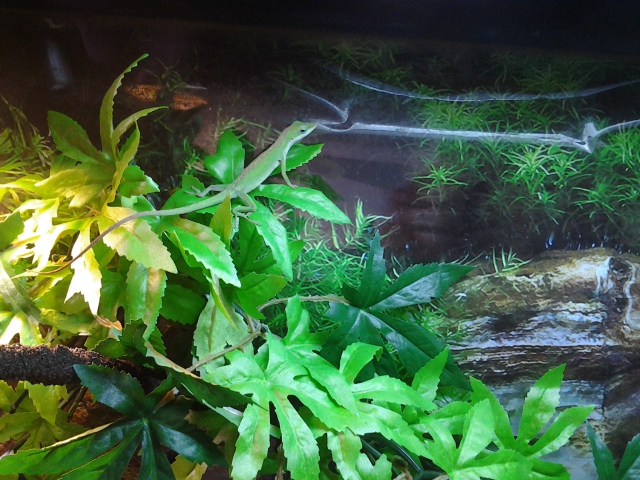 green anole care help
Questionanole color
my tank
QUESTION: hey
green anole care help
Questionanole color
my tank
QUESTION: hey
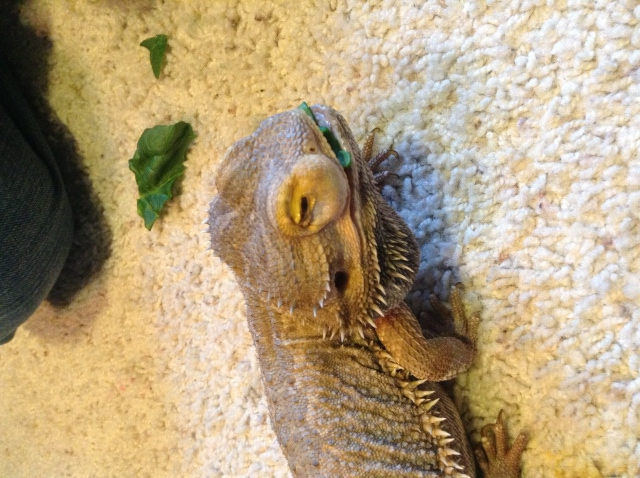 Rex hypovitaminosis A
Question
Rex Rex
This is the picture of hi
Rex hypovitaminosis A
Question
Rex Rex
This is the picture of hi
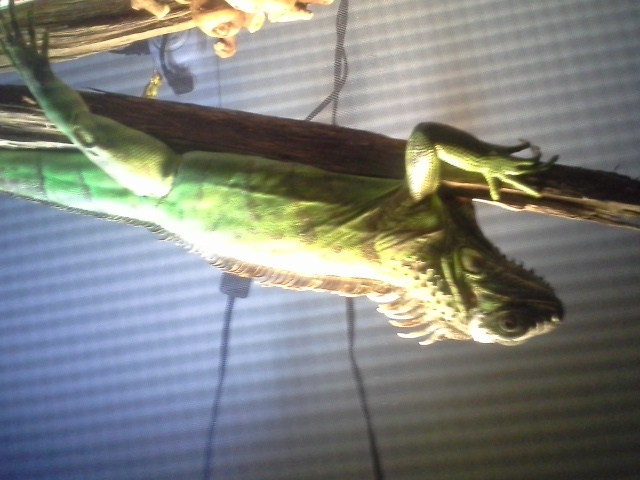 Iguanas breeding
Question
female ig earl
Make this sort and
Iguanas breeding
Question
female ig earl
Make this sort and
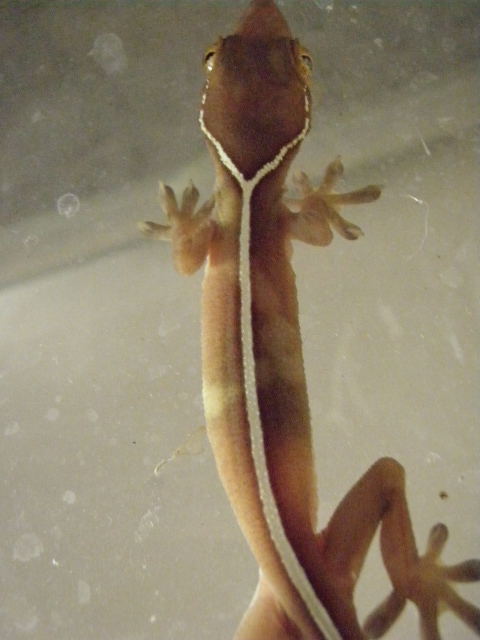 spots on gekko vittatus
Question
Spots foto
Hello, I have recently notic
spots on gekko vittatus
Question
Spots foto
Hello, I have recently notic
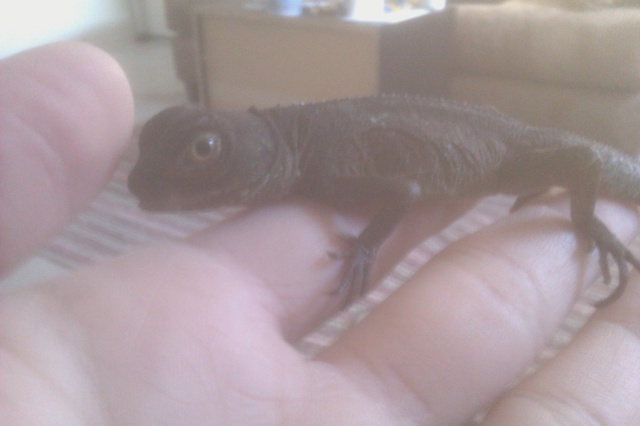 Should I be concerned about my CWD
QuestionQUESTION: Ive had this guy for probably a week
Should I be concerned about my CWD
QuestionQUESTION: Ive had this guy for probably a week